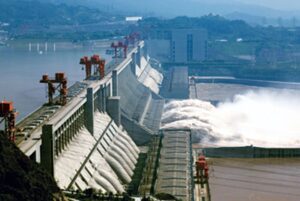China’s Mega Dam Project on Brahmaputra Kicks Off, Raises Concerns in India

China’s Brahmaputra Dam Project Sparks Concerns in India
New Delhi – Construction has commenced on a significant hydropower project on the Yarlung Tsangpo River in Tibet, known as the Brahmaputra as it enters India. The project, located in the river’s lower reaches, has triggered anxieties in India and Bangladesh regarding potential implications for water resources and regional stability.
Project Launch and Key Participants
The formal commencement of the “Yarlung Zangbo River Lower Reaches Hydropower Project” was marked by an official ceremony in Tibet. Chinese Premier Li Qiang, a high-ranking member of the Communist Party of China (CPC), was present at the event, signalling the project’s importance to the Chinese government. Representatives from key central and state government departments, along with prominent central enterprises, also attended the groundbreaking ceremony.
Concerns and Potential Impact
India has voiced concerns about the potential impact of this large-scale dam on the Brahmaputra’s water flow, particularly during periods of low rainfall. The Brahmaputra is a vital water source for millions of people in India’s Northeast, supporting agriculture, livelihoods, and ecological balance. Changes to the river’s flow could have significant consequences.
- Potential for altered water availability during crucial agricultural seasons.
- Risk of increased flooding or reduced water flow downstream.
- Impact on the river’s delicate ecosystem and biodiversity.
Geopolitical Implications
This project highlights the complex geopolitical dynamics surrounding transboundary water resources in the region. India and China lack a formal water-sharing agreement, adding to the apprehension. The scale of the dam raises questions about China’s intentions and the potential for future water diversion projects.
Ongoing dialogue and information sharing between India and China are crucial to address concerns and ensure the sustainable management of the Brahmaputra River for the benefit of all riparian nations.
- China has officially started construction on a major dam on the Brahmaputra (Yarlung Tsangpo) River in Tibet.
- The project raises concerns in India and Bangladesh about potential impacts on water resources and regional stability.
- Premier Li Qiang attended the groundbreaking ceremony, highlighting the project’s importance to the Chinese government.
- The dam could significantly alter water availability downstream in India, impacting agriculture and livelihoods.
- The lack of a formal water-sharing agreement between India and China intensifies concerns about water security.
- This project underscores the complex geopolitical landscape surrounding transboundary water resources in the region.
- India must enhance its monitoring and assessment capabilities to understand the dam’s real-time impact.
- Continued dialogue and transparency between India and China are essential for managing shared water resources sustainably.
